So you’re planning a holiday and you want to go diving. You’ve read that Indonesia has awesome diving and you want to know what each dive site has to offer.
At Siren Diving, we dive around the three islands of Nusa Lembongan, Nusa Penida and Nusa Ceningan. These islands are a part of the marine protected area of Indonesian. They are also located in what is referred to as the ‘Coral Triangle’, which is widely accepted as having the greatest marine diversity.
The islands offer a variety of diving to suit the newest of divers, underwater photographers, all the way up to professional scuba junkies. The diving here is famous for our Manta Rays which can be seen all year and the chance to encounter the wonderfully weird Mola Mola.
Visibility is an average of 20m all year, but can be within the range of 15-30m. The average water temperature is 27 degrees, except for July to September when we can experience temperatures in the low 20s. While this might be a bit chilly for some, it’s also the best time to see the Mola Mola.
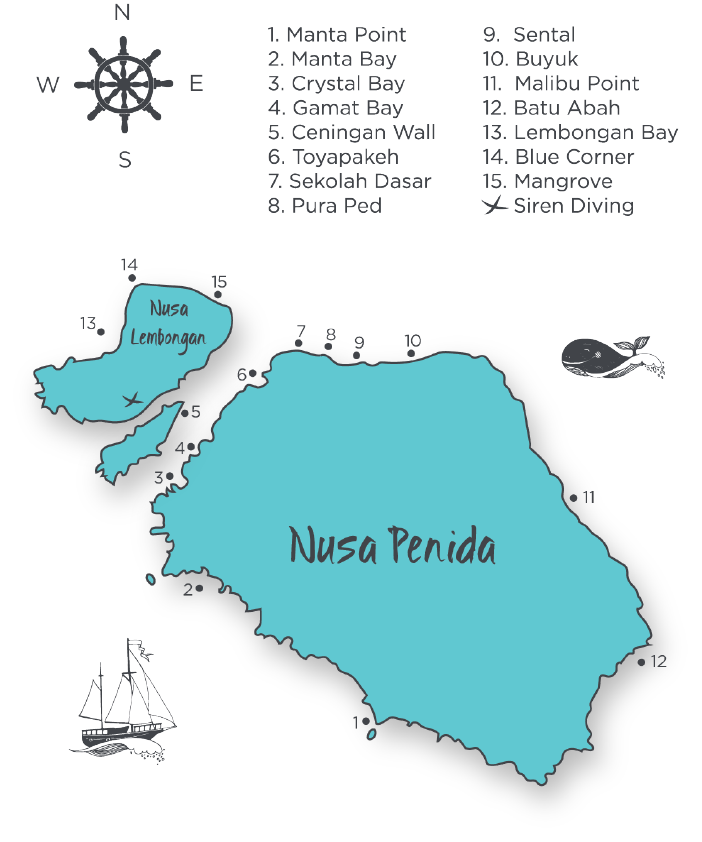
The Manta Ray Dives
The South coast of Nusa Penida has dramatic landscapes and great diving. It also happens to be a favorite hangout for the Manta Rays when they need a good clean.
The Cheeky Middle Bit
World famous Crystal Bay, our personal favourite Toyapakeh and your best chance to see the Mola Mola in season.
Crystal Bay
Gamat Bay
Ceningan Wall
Toyapakeh
Toyapakeh Wall
The North of the islands
From Lembongan to Penida. The North offers up a pristine expanse of reef and exhilarating drift dives.
Diving with Manta Rays and South Penida
To the South of the Nusa islands we find our Manta dive sites. Large plateaus create the ideal cleaning and feeding station for the Manta Rays. Although not as rich in diversity of corals and marine life, the plateaus do offer up some interesting topography with troughs and swimthoughs. The main reason for diving in this area is of course the chance encounter the swirling mantas above as they swoop in for a closer look at the divers.
Manta Bay
Manta Bay is a actually a series of bays along the coast. Diving conditions are generally easy at this site, although we can experience some surge. The Manta Rays are often smaller than the giant ones found at Manta Point, but the dive site is much closer and more protected. The plankton rich water found along the limestone coast attracts the Mantas all year around.
The dive site is a shallow bay with a mixture of sandy and coral bottom and generally a maximum depth of 12m. The dive is often spent quite shallow, closely observing the Mantas as the feed and sometimes put on a display for the watching divers. Delving a little deeper into the dive site we can explore the gullies and swim throughs. This allows us to search for Bamboo Sharks, Woebegong Sharks and turtles often to be found at the site.
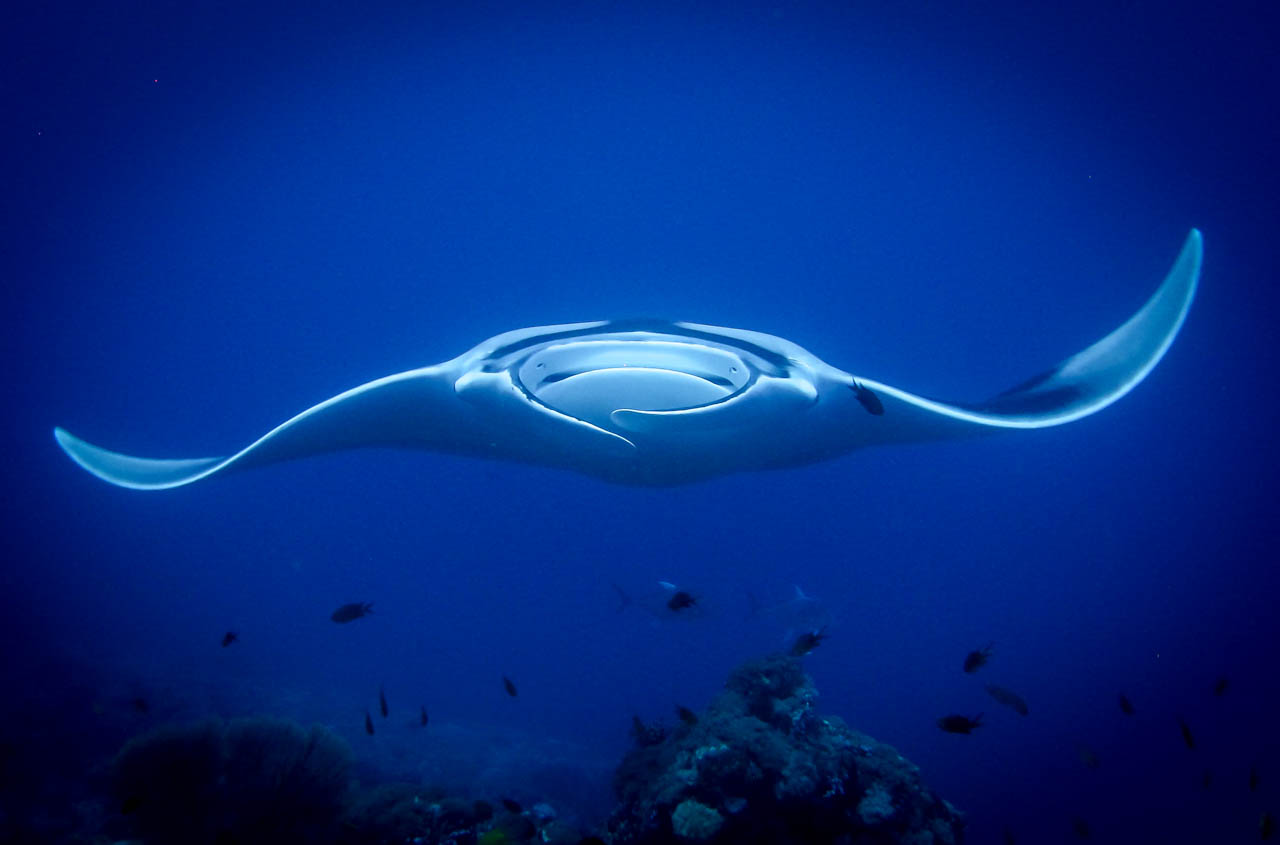
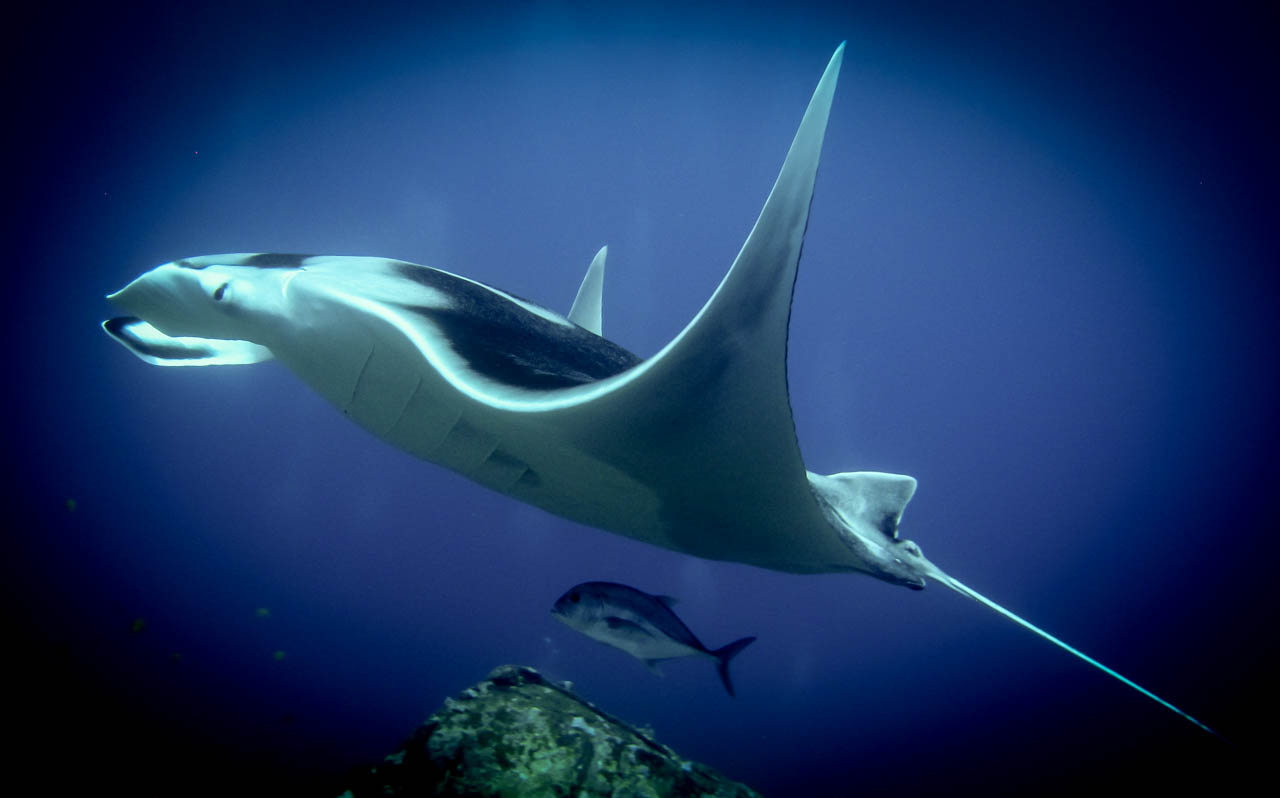
Manta Point
A 45 minute boat ride alongside the dramatic limestone cliffs that feels like you are on the set of Jurassic Park and you will arrive at Manta Point. Weather conditions and big waves mean that we are not always able to dive this site. This site provides year round opportunity for a magical encounter with the majestic Manta Rays.
The main attraction of the dive site is the cleaning station or large rock formation found at a shallow depth of 5m. Here, the plankton rich waters attract circling mantas waiting to be cleaned and often swooping in for a closer look at divers. Manta trains with as many as 30 mantas on one dive have been spotted at this site. Swimming into the deeper water can bring different encounters. Nurse and Bamboo Sharks, Blue Spotted Sting Rays and in Mola Mola season perhaps even an encounter with a Sun Fish are all possible.
The Cheeky Middle Bit
In the middle of the islands we encounter some exhilarating wall dives and perhaps the area’s most famous dive site – Crystal Bay. Named because P lost her favorite pair of earrings there*. Although Mola Mola have been sited at all of the dive sites, it is at Crystal Bay or Toyapakeh where you are most likely to see them. They come up from the depths, during the months of colder water, to be cleaned and photographed by waiting divers. All of the dive sites in this area offer spectacular underwater topography and the best visibility.
*this factoid my not actually be true
Crystal Bay
Crystal Bay is perhaps one of Bali’s most famous dive sites and certainly the most popular during the July to October Sunfish season. The dive site is given its name due to amazing ‘crystal’ visibility that is usually experienced.
Inside of the bay the dive site is a horse shoe shape of coral encircling a white sandy sloping bottom. Here we encounter an amazing variety of sea life including sand grazing Surgeon Fish, Sea Snakes, Leaf Blower Wrasse and Flounder. Some pretty amazing soft and hard coral can be found. Giant table corals abound as this area is quite protected it is an ideal location to undertake training.
A very large mushroom shaped coral bommie marks the edge of the bay and from here the wall section of the dive site begins. The wall also provides the potential for some more challenging dive conditions. The nutrient rich water accompanying strong currents makes the wall a marine life treasure trove. A favourite playground for Octopus, Nudibranchs, Frogfish and of course the Mola Mola.
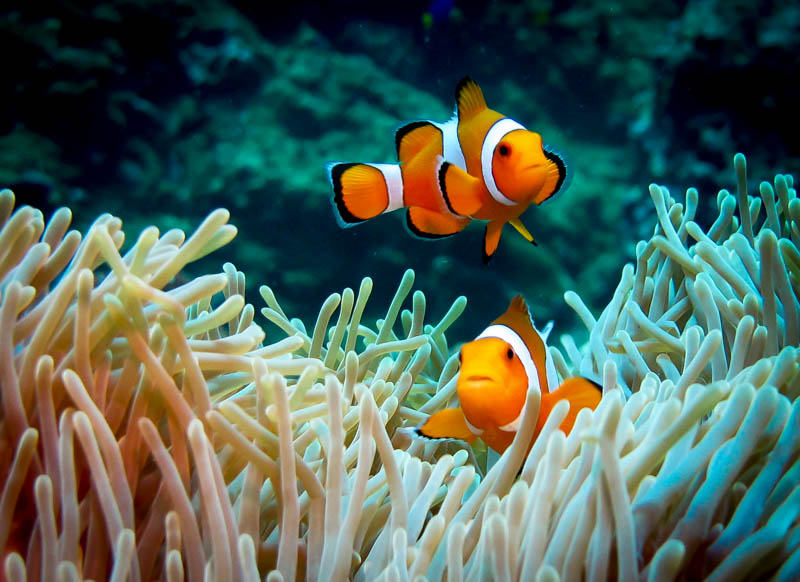

Gamat Bay
Gamat Bay is perhaps the smallest dive site around the islands. It is also one of the few dives where you are not too affected by the currents in the shallow depths of the bay. Here in the bay we find a sandy bottom and a profusion of beautiful soft corals, gorgonians and table coral. We can spend time here exploring and searching for invertebrates, nudibranchs and other macro life. A true wonderland for photographers.
As we work our way out of the mouth of the bay and onto the steep slope, we find large coral bommies and start to encounter stronger conditions. The current here attracts larger marine life such as schools of Surgeonfish and Batfish along with Reef Sharks and Turtles. During the season, Gamat provides a good opportunity to see Mola Mola at depth.
Ceningan Wall
Located on the East side of Nusa Ceningan, this spectacular wall drops to a dizzying depth of 170m. The water here flows out of the nearby mangroves. In combination with the deep waters of the channel it creates nutrient rich waters for the plethora of healthy corals and marine life.
A more advanced dive, the site needs to be dived at depth to be truly appreciated. There is often strong current to be found, but in return we find an impressive site quite different to others around the islands. As we drift along the wall there is an abundance of invertebrates, octopus and nudibranchs to be found hiding in the cracks of the wall. Looking out into the deep blue we can often observe Reef Sharks, Bull Rays, Eagle Rays and Mola Mola.
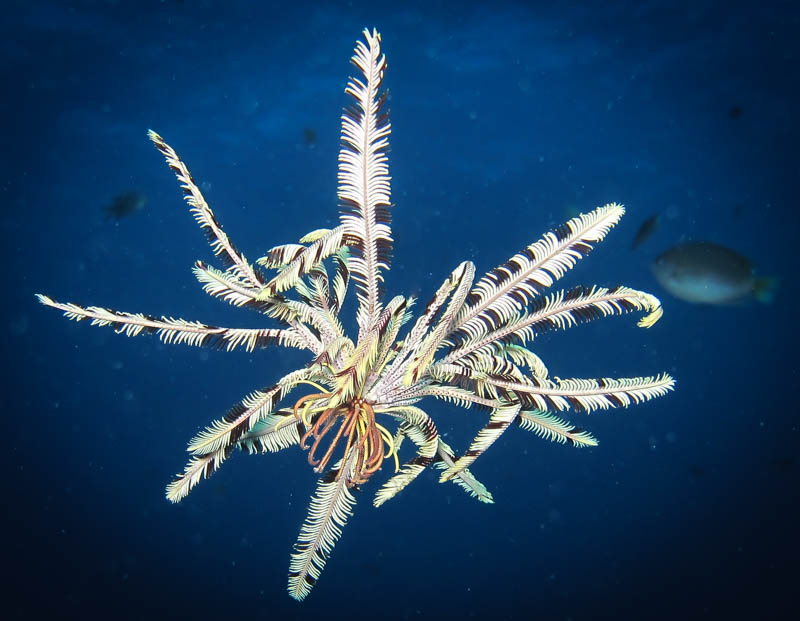
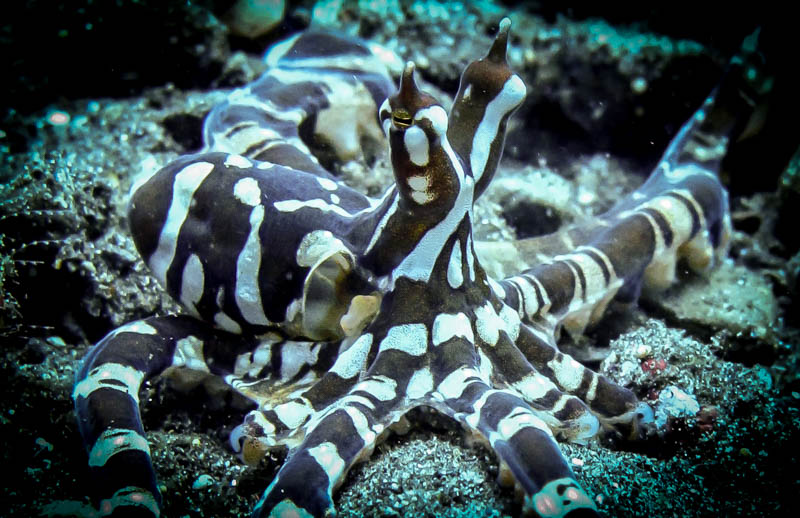
Toyapakeh
Toyapakeh means ‘Salt Water’ in Balinese and this site is considered by many to be the most rewarding dive around the islands. From the minute you drop down it is very easy to see why, as you find yourself surrounded by school after school of fish. Not to mention the spectacular topography of the site. The shallow bay is covered with a beautiful array of hard and soft corals and offers protection from the fast moving Ceningan Channel. Here we can have time to explore and find scorpion fish, orangutan crabs, mantis shrimp, blue ribbon eels and some pretty cool nudibranchs.
As we head out deeper towards the channel, we begin to drift with the current along the steeping slope passing by large coral formations. Schools of red toothed Trigger Fish, Unicorn Fish and Batfish swim all around. We can also encounter large Barracuda and Giant Trevally. Generally the current runs North along the dive site, making for an excellent drift dive. The conditions can sometimes be tricky making for a more adventurous dive in differing directions. Heading deeper on the slope larger pelagics such as Mola Mola, Eagle Rays and even whale sharks have been spotted here .
Toyapakeh Wall
On the South end of Toyapakeh we find a magnificent wall dive. From 5-15 metres we find a coral plateau and then the site drops off into a very deep wall and the big blue. The constant current running along the wall makes for fantastic diving for those a little more experienced. The nutrient rich waters allow both hard and soft corals to thrive here as well as an abundance of marine life.
As we drift along we can find invertebrates hiding in the cracks of the walls, as well as giant Moray Eels and Octopus. Schools of Sweetlips, Red Tooth Trigger Fish and Batfish are to be seen around. As well as the chance to encounter Reef Sharks, Grouper, Barracuda and Mola Mola. We have even been lucky to encounter oceanic Manta swimming past in the deep channel.
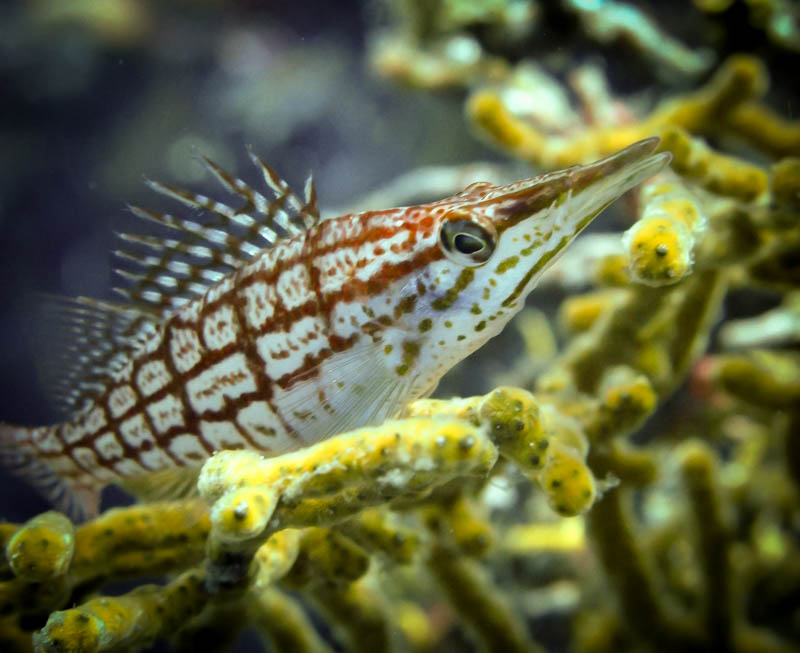
The North of the islands
The sloping reefs found along the North coast of the islands offer up dive sites with spectacular corals starting from as shallow as 5m. An incredible array of hard and soft corals, with an abundance of macro life is waiting to be discovered by the well trained eye. The biodiversity provided by the healthy reef makes for the perfect environment for a huge number of schooling tropical fish. Out in the blue and off the reef it is possible to see those exciting pelagics everyone is hoping for – Threshers, Mola Mola and even Whale Sharks.
SD (Sekolah Desar)
SD is so named for the village primary school, Sekolah Desar. Seaweed farmers are to be found living along the stretch of white sandy beach, while beneath the blue waters the coral reef runs parallel. SD combines with three other dive sites (PED, Sental & Buyuk) to make up the length of the entire coast. They offer some of the best drift diving to be found in Indonesia. The currents here can range from non-existent to exhilarating and certainly make for an exciting dive. With currents and conditions sometimes changing halfway through the dive, there’s never a dull moment.
The site consists of a moderately steep slope, covered in fields and fields of corals and sponges. As we drift along we encounter swirling schools of Trigger, Butterfly, Trumpet and Angel Fish. In fact, pretty much any other tropical fish you can imagine. Turtles, Sea Snakes and Reef Sharks are often spotted and peering out into the blue we may even be lucky to encounter larger pelagics.
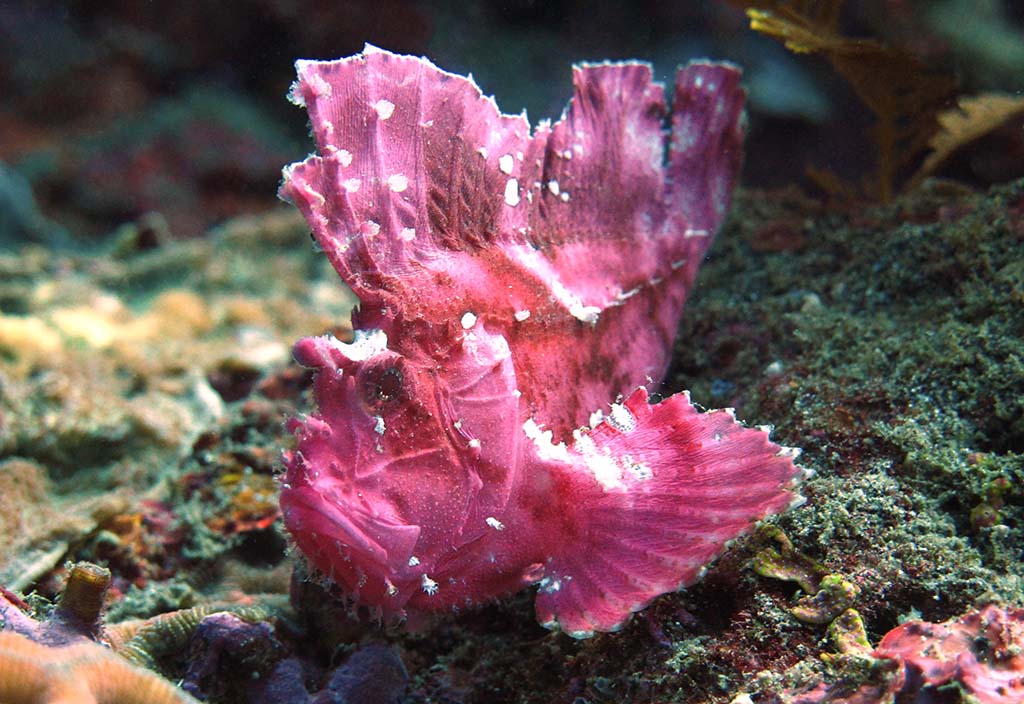
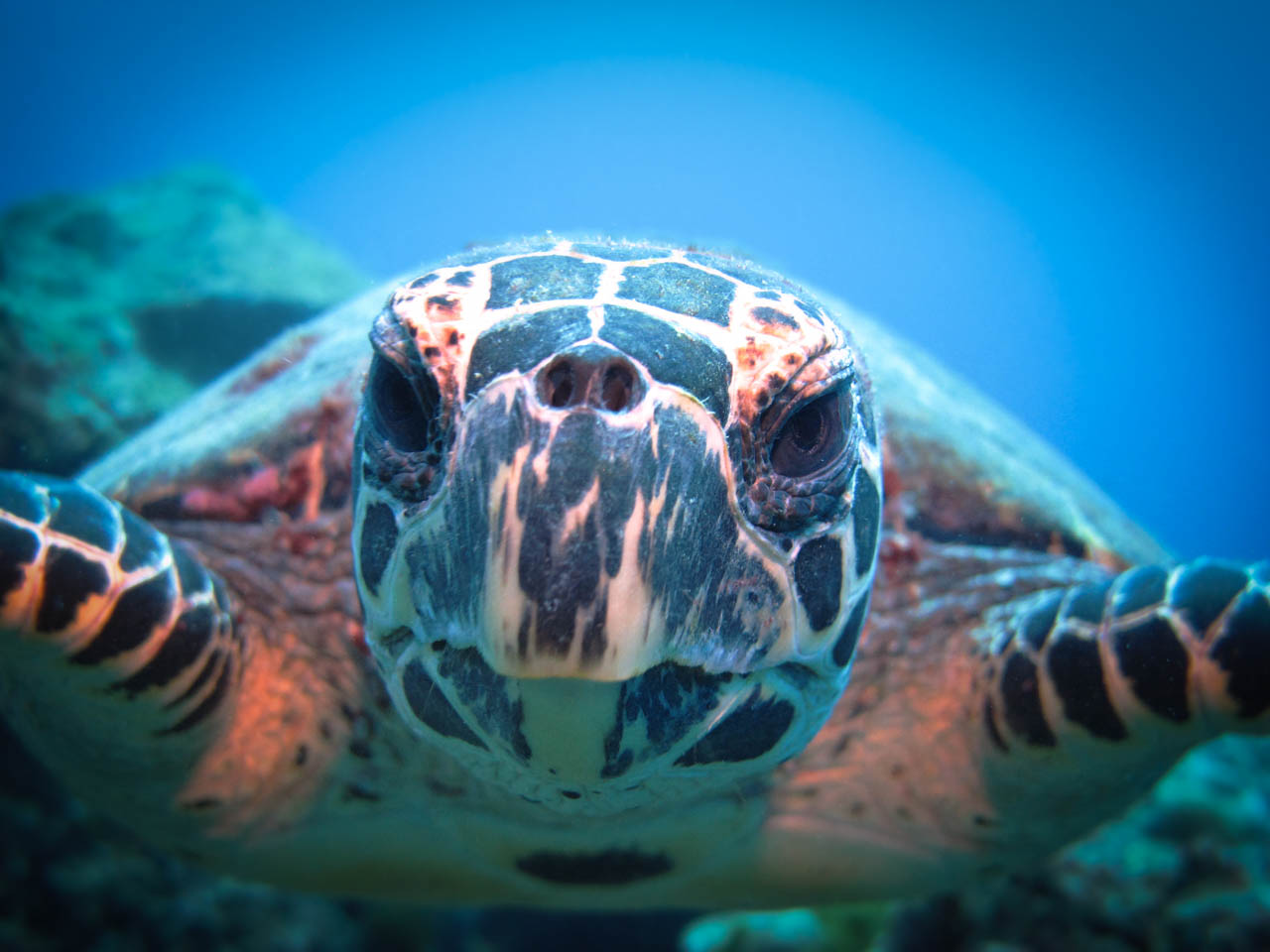
Pura Ped
The drop off point for Ped is marked by the Temple found on the shore. Ped is the second of the four dive sites that make up the length of the entire North Coast of Nusa Penida. The dive site offers up a slightly steeper slope than SD and some excellent stretches of wall diving. Once again the currents here can range from a fast moving roller coaster ride to a nice relaxing amble along the dive site. Beautiful sponge barrels, long whip corals and an extraordinary expanse of staghorn coral can be found along the dive site.
Schools of Triggers, Sweetlips, Unicorns and pretty much every other tropical fish you have seen in a guide book can be found along the site. In a slower drift we can have the opportunity to search for Orangutan Crabs, Nudibranchs and Leaf Scorpion Fish. Diving down a little deeper we can sometimes find large pelagics such as Eagle Rays, Reef Sharks and even Mola Moa during the season.
Sental
Sental is the third of the four dive sites that make up the length of the entire North Coast of Nusa Penida. Therefore the topography is very similar to Ped and SD, however the slope is steeper and we can also find more clusters of large coral bommies. This area is considered to offer some of the best drift diving in Indonesia. Depending on the conditions of the day it can be an adrenaline charged ride or a gentle tour past the magnificent corals on display.
Once again a dive site in this area offers up a plethora of schooling tropical fish from Triggers to Batfish and Anthias. Octopus, giant Moray Eels and beautiful Ribbon Eels can be found hiding in amongst the corals. Out in the blue and down at depth Hammerhead Sharks and Whale Sharks have even been spotted and regular sightings of Mola Mola in season.
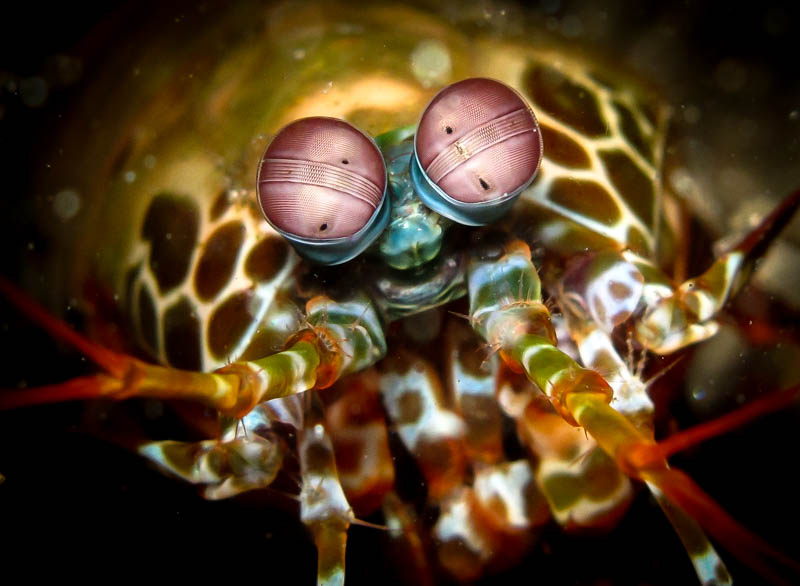
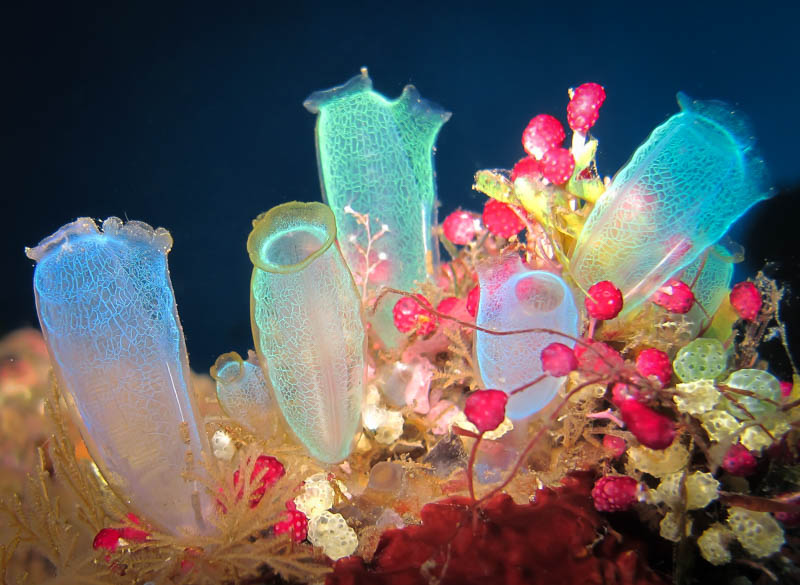
Buyuk
Buyuk is the fourth of the four dive sites that make up the length of the entire North Coast of Nusa Penida. As such the topography is very similar to the adjoining sites. The strong currents found on this site are evidenced by the amazing coral to be found. Sponge barrels, long whip corals and a stunning array of other hard and soft corals. With the right conditions this site offers up an adventurous drift dive, sometimes at quite an exhilarating pace.
Swirling schools of fish and an array of interesting macro can be found on the site provided you are not drifting too fast! Giant Napolean Wrasse and large Barracuda are also frequent visitors to the dive. There are rumored sightings of Thresher Sharks down at depth and Mola Mola are also to be seen during the season.
Mangrove (Sakenan)
This site is named for its location next to the mangroves to be found on the island. A personal favourite of Darrens, this site never disappoints. The nutrient rich waters and healthy ecosystem have created a diverse range of corals and abundant marine life. Again, currents at this site can range from nonexistent to very fast. Unlike the other drift dives found around the islands, this site has a gentle sloping reef. This makes it the perfect dive site for all levels of divers and is also a very popular location for snorkelers.
A multitude of table corals, anemones and small bommies are waiting to be explored for Mantis Shrimp, Nudibranchs and Frog Fish. The site is also well known for giant Pufferfish, Barracuda and Giant Trevally. The occasional reef shark or turtle will also join divers for the drift.
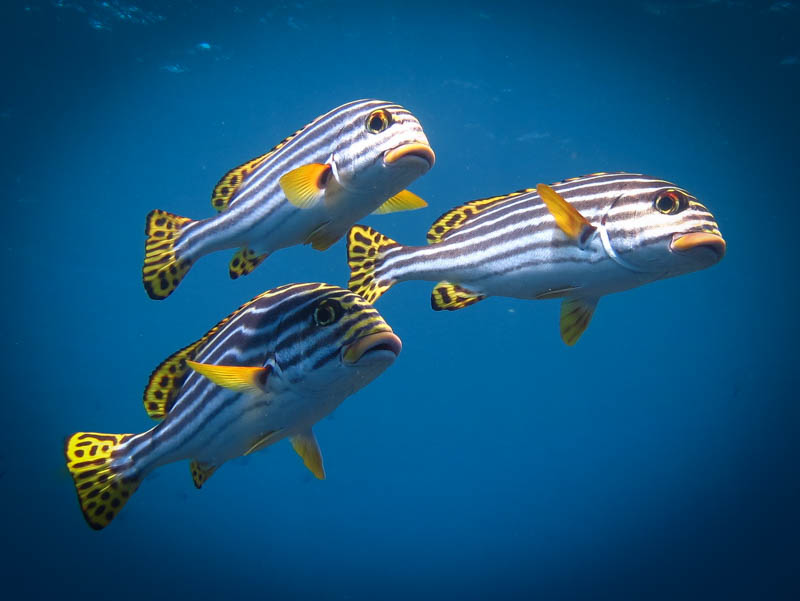
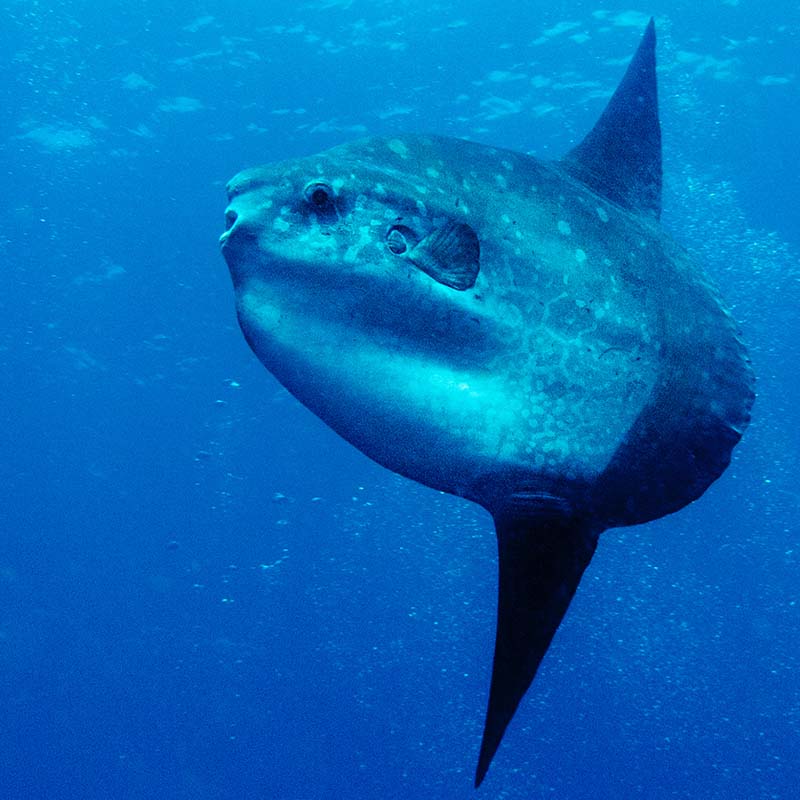
Blue Corner
Located on the West Coast, this dive is all about looking into the blue for the impressive pelagics that can be found passing. This is an exhilarating dive for experienced divers only and never fails to disappoint.
The dive has spectacular topography with the start of the dive a series of current swept terraces. Drifting around the ‘corner’ drops into a very deep vertical wall. Schools of Snapper and Jacks, Napoleon Wrasse, Tuna, Eagle Rays, Marble Rays, Turtles, Reef Sharks and Mola Mola have been seen here all year around.
